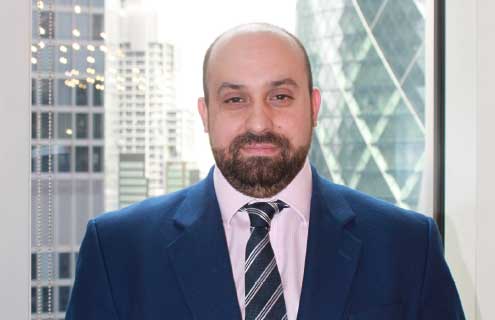Willis Towers Watson
Adrien Collovray of Willis Towers Watson explains that a hardening market, irrespective of location, is going to lead to increased captive formations
What is the current climate in the European captive industry?
There has been a lot of interest in new formations. There has been a lot of developments, driven by market changes, in the companies that reach out and speak to us.
During 2019, a lot of the market changes were more of a correction, which is why you hear the term “harshening market” being bandied around, as opposed to a “hardening market”.
I think as we move into 2020, we will move into what is more of a hardening market, and then we will see a movement from just discussions about captives into fully-fledged formations and a lot of developments.
From that perspective, the environment is very positive and well-aligned with the utilisation of captives. If we look at the existing captives, there is a desire there to increase utilisation in order to develop or increase the value that is achieved from them.
That is being done in a number of ways, but it is very specific to individual companies as to what they want to achieve and how they want to achieve it. That gives consultants like me a job because we get to do the really interesting stuff, which is programme design.
What do you predict the biggest challenges will be in 2020?
To be honest, we got rid of a lot of the challenges in the soft market. That was really the biggest challenge.
Moving forward we will continue to have similar challenges to the challenges, as we’ve had over the past few years, around base erosion and profit shifting, and ensuring new formations remain consistent with corporate strategy and social responsibility.
While we are currently seeing a hardening market, we are not necessarily seeing that translating into increased appetite for corporations to invest a huge amount of additional capital.
So, ensuring that the utilisation of captives is aligned with the value achieved from the contributing capital of the captive together with maximising the existing capital will be key challenges.
Has the delay in Brexit had a major impact on captives?
In short, no. We had this discussion at the beginning of the Brexit negotiations with most of our captives. We had all prepared for the 29 March deadline, and while there were a few companies that came to us in February, they were really considered late to the party. In reality, the majority of captives tend to focus more towards reinsurance, or direct writing in non-statutory classes.
Therefore, the impact on the captive industry as a result of Brexit is minimal, and those that do have an impact have measures in place.
While it is still a consideration and something that we need to ensure is managed, Brexit is not going to have a detrimental impact, and it is certainly not going to have a material impact on the captive industry.
What opportunities does Brexit provide captives?
Obviously, because of Brexit, there is a need to establish vehicles to access the UK and EU environments. In some cases, this has meant that they have to have additional vehicles and structures in order to ensure they maintain the availability. In truth, the major opportunities lie in those that have already picked up the baton, such as Gibraltar, which is aligned with the UK.
Gibraltar has between 20 to 25 percent of the UK motor book, not captives specifically, but generally speaking, so it’s a very important location for the UK. Gibraltar has a pro-active regulator, protected cell legislation, and provides a lot of opportunities for businesses based in the UK.
What is your view on the Solvency II whitepaper?
It’s important to have strong and robust regulation; Solvency II has certainly increased the standards of European domiciles and has driven more risk-based, Solvency II-light captive models in other domiciles, so yes there is a lot of value.
Proportionality is an important thing for the captive industry, and if we look at how that is being applied, it is not being applied consistently, which causes frustration but gives opportunities to captive domiciles versus home domiciles. Ultimately, I think we have got to a position where we are starting to get a level of comfort around the application, requirements, and reporting of Solvency II.
While I know from speaking to captive owners that they still have frustrations around Solvency II, I think in reality we have been able to manage much of the pain over the past few years and should not be fairly comfortable with the requirements despite the additional cost and reporting.
How do you expect 2020 to playout for the captive industry?
We are going to see increased captives, it’s as simple as that. We’re going to see captives established to meet current requirements, but we’re also seeing companies set up captive licences with a view to having future opportunities, for example. in preparation for anticipated difficult renewals.
At their previous renewal, a few clients might have been caught out from increases that were occurring and they did not have a captive in place, therefore, did not have the options in place. Moving forward, we will see captives establish to allow companies to have that option.
Certainly, a hardening market irrespective of location is going to lead to increased captive formations, there is a direct correlation.





